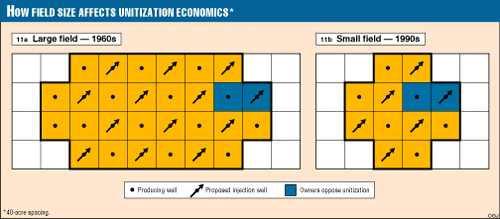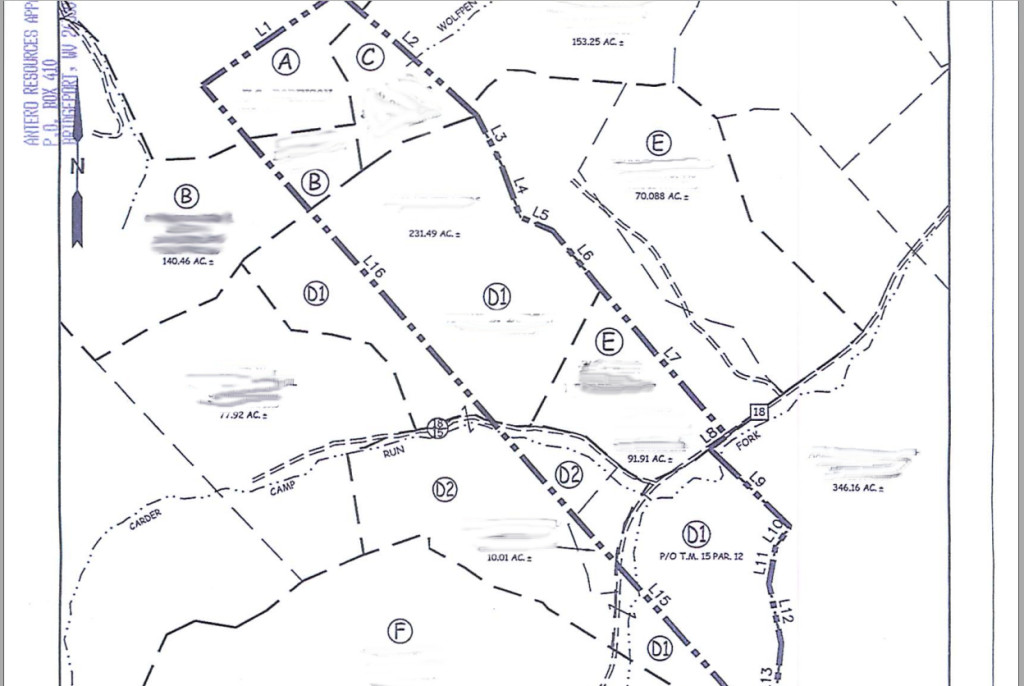 Once you’ve started talking with a landman about an oil and gas lease or a modification or amendment of an old oil and gas lease, it usually won’t take long before the term “pooling” or “pool” or “unit” or “unitization” comes up. A lot of landmen will throw the word out, just expecting you to understand it. They use the term all the time, so they might not even realize that they just said something that doesn’t make any sense to you in context. “What does a swimming pool have to do with my oil and gas rights?” you think to yourself, but the landman is moving on to something else and you just move right along with him. It never really gets explained sometimes.
Once you’ve started talking with a landman about an oil and gas lease or a modification or amendment of an old oil and gas lease, it usually won’t take long before the term “pooling” or “pool” or “unit” or “unitization” comes up. A lot of landmen will throw the word out, just expecting you to understand it. They use the term all the time, so they might not even realize that they just said something that doesn’t make any sense to you in context. “What does a swimming pool have to do with my oil and gas rights?” you think to yourself, but the landman is moving on to something else and you just move right along with him. It never really gets explained sometimes.
A good landman will explain the term because he/she will know that people don’t understand what a pool or unit is, but not all the landmen out there are experienced enough to 1) realize that you don’t know what they’re talking about and 2) be able to explain it well.
A lot of people use the terms pooling and unitizing interchangeably, but they are technically two different things. Here in West Virginia we primarily use pools, though the argument could be made that what we are doing is a little more like unitization than pooling. Here are my Oil and Gas Law in a Nutshell definitions. Pooling: bringing together small tracts for the drilling of a single well. Unitization: combining leases and wells over a producing formation for field-wide operations.
UNITIZATION
Unitization is most often used to describe the situation where you use some of the wells in the area to inject fluids into the formation that you’re trying to get oil or gas out of, and the rest of the wells to extract the oil and gas. The fluids you inject increase pressure or do other things to make the oil and gas flow better. Without the fluids, you wouldn’t get much or any production. It wouldn’t be fair to use some guy’s property to inject the fluids and not compensate him in some way, so the injection wells and the extraction wells are “unitized” and they share the royalties. This is more common in oil production than in gas production. The following graphic from Oil and Gas Journal is by far the best illustration that I could find online. I hope they don’t mind me using it.
The dots represent wells that are intended for production, and the dots with arrows on them are wells that are intended for injection, in this case “flooding” with water. The blue areas are owned by someone who doesn’t want to participate, but that’s way off topic.
Unitization is often done when the field is ending it’s productive life, so wells that were previously used for production are converted to injection, and contribute to the efficiency and profitability of the field.
POOLING
Pooling is when you’re using multiple properties together to develop a well or, as we are doing here in West Virginia, a group of wells that all start from one well pad.
On this map, the well pad would be in the center of the pool, about where D1 is, and wells would extend out to the northwest and southeast.
WHY THEY USE POOLING
The big plays here in West Virginia are the Utica and the Marcellus shales. To develop these shale plays efficiently, we use horizontal fracturing. The company will drill down to just above the Marcellus shale (or the Utica if that’s what they’re after), then bend the well and run it horizontally through the formation. The horizontal part of the well will extend out from half a mile to more than a mile. There are very few individual tracts of land in West Virginia that can encompass an entire one-mile long horizontal leg. This one fact is one half of the reason behind pooling.
The other reason is that oil and gas leases are in competition with each other. Let me explain.
West Virginia law recognizes a rule called the Rule of Capture. It means that if something enters your property, it’s yours. It was developed a long, long time ago in England to determine who owned an animal that was wounded by a hunter, ran onto someone else’s property, and died there. The courts decided the animal belonged to the property owner. The courts applied the same rule to oil and gas.
Since you could own any oil that came onto your property, you could drill a well right next to the property line and suck the oil out from under your neighbor’s property. If your neighbor didn’t drill a well on his side of the property line (it’s called an offset well) he would just lose all his oil. It wasn’t nice, but it was legal.
If your neighbor had leased his oil rights to someone, he could request that the lessee drill an offset well. If the lessee wouldn’t your neighbor could cancel the lease and lease the property out to someone else.
Leases were in competition with each other, and they still are. That’s why an oil and gas lease has to include the right to pool, it’s the right to use your property together with other properties to develop the oil and gas.
So now you know what pooling is, and why you’re being asked to include the right to pool in that lease you’re looking at. There’s quite a bit more about the pooling clause that we could talk about, but this post is already pretty long so we’ll save that for another day.
If you’re finding yourself confused by all the legalese in an oil and gas lease, or if you’re intimidated by the thought of trying to negotiate with someone who does negotiation every day, give us a call at Nuttall Legal. Our number is 304-473-1403.


